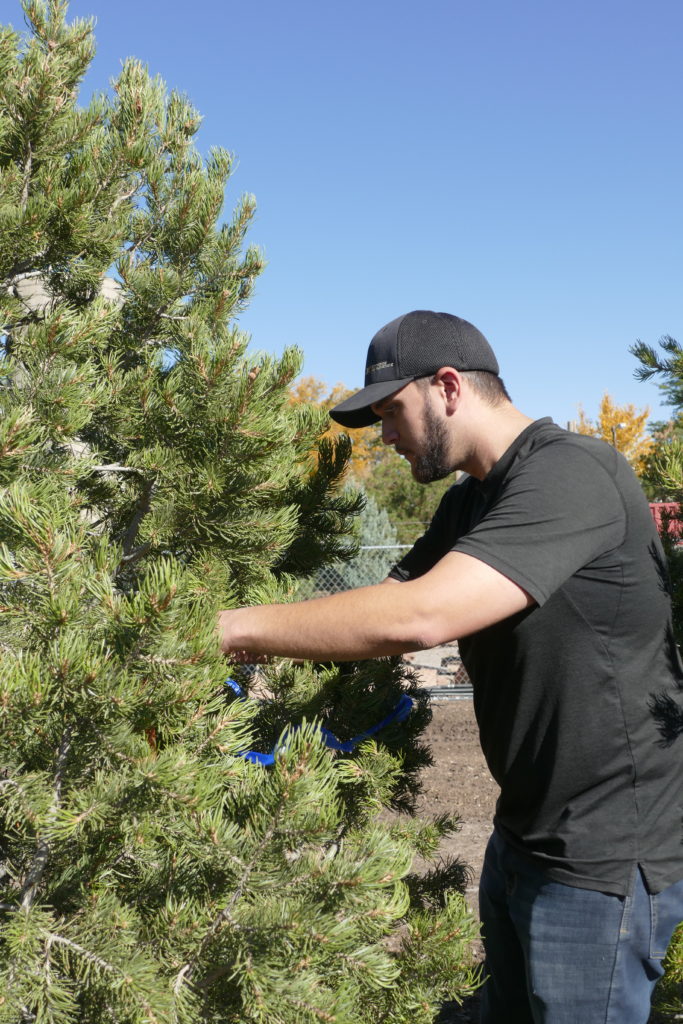Including employees with diverse backgrounds on a company’s staff is not just a matter of providing equitable work opportunities, but it expands a company’s possibilities. People from different backgrounds offer unique perspectives that can lead to innovative solutions and additional opportunities from new markets and products to alternative ways of accomplishing projects.
However, attracting a diverse workforce has its challenges for Colorado’s horticultural businesses. Finding and hiring employees with a diversity of backgrounds, ages, genders, and other demographic differences can be difficult for several reasons. Employers in the green industry are faced with:
- a Colorado population that is 86.9 percent Caucasian, so the number of possible hires who are from other racial backgrounds is low;
- employee turnover is low for many companies, so people grow old at work, creating fewer openings for younger hires;
- family members and friends of current employees are often the most likely to apply for jobs, so the staff generally maintains the same demographic makeup; and
- small companies don’t have the budgets for dedicated human resources staff, so other managers have to juggle their main tasks with employee recruiting, which makes it difficult to develop diversity, equity and inclusiveness initiatives.

Keith Williamson is the Inventory Control Manager at Little Valley Wholesale Nursery, as well as the person who does the hiring, due to his Spanish-speaking ability. The company in Brighton, Colo. employs 45 full-time staff members and up to 80 seasonal workers.
Beyond the Spanish-speaking employees from Mexico and other Central and South American countries, demographics at greenhouses and nurseries are not very diverse. However, some of the larger companies employ immigrant workers from African and Asian countries.
“We don’t have a very diverse group of applicants who come through our doors,” said Williamson, who has worked at the company for 33 years. “We have very few African Americans who come in to apply for jobs. We have had drivers who are African American, but they are hired by our contractors, not me.”
On the other hand, Colorado’s green industry as a whole can celebrate the fact that women find the jobs attractive. In some areas, like greenhouse production, female employees outnumber men. Moreover, women and men share the same job titles from labor to management at the majority of companies.
Kerri Dantino, the outgoing Board President of the Colorado Nursery & Greenhouse Association, is the Purchasing Manager at Little Valley. She checks off two diversity boxes: female and young. She’s in her early 40s, so she’s younger than her average coworkers in management. (CNGA’s next Board President is also a woman! Mandy Gerace of Syngenta will be taking the helm in January.)
Dantino helped connect Little Valley to another young, female manager, Jessica McCool, who was hired as a production assistant and promoted recently to Production Manager.
“Jessica’s made a difference. She’s not set in her ways and has definitely brought in some good ideas,” Williamson said. “She’s got a good brain, thinks things ahead, and is concerned about her labor force and not just because of budgets and getting things done.”
She is one of two 20-something, Front Range Community College graduates who are bringing new energy to the company. Xander Damiani also had experience working at Paulino’s in Denver and Shelly’s Garden Country in Broomfield, Colo.
“He had called about a job previously but we had already hired for the position. When that employee didn’t work out, I reached out to Front Range and asked for him to give me a call back,” Williamson said. “We definitely need some of the younger people coming in so we don’t stagnate.”
Little Valley has also employed transgender and gay people. Williamson admitted some diverse employees have difficulty feeling comfortable in a basically homogenous workforce, but he and the company’s management strive to create a welcoming, appreciative culture.
Ideas for Attracting Diverse Employees

Make a Commitment
- Budget for management (and HR staff, if they exist) to participate in some Diversity Equity Inclusion (DEI) training whether it is hiring a consultant to facilitate education, attending webinars offered by nonprofits, or doing research with expert sources.
- Create and post a DEI statement about your company’s hiring practices on your company’s website and help wanted announcements. Make sure it goes beyond an equal opportunity blanket statement, and is tailored to your company’s activities and culture.
Diversify Communication Strategies
- Find out where the diverse communities you want to reach are receiving their local news and resources so you can send announcements to them. Examples are classified ads in local publications, career pathway programs, or chambers of commerce aimed at diverse communities, such as
- Ask your diverse employees to reach out to their friends and contacts with information about job openings. For example, employees who are recent graduates can reach out to other young people.
- Have your multilingual employees help with creating job descriptions, help wanted ads and signage in other languages, and interacting with job applicants whose first language isn’t English.
Support Diverse Employees
- Create pathways through apprenticeships or community programs, where inexperienced workers or career changers can learn about jobs in the green industry.
- Assign a staff person, besides the employees’ managers, who the employees can use as a resource when they have questions or issues with their work environment.
- Reach out to nonprofits that provide services for diverse employees to help support them, and invite those nonprofits to visit or provide information at your company. For example, Salud Clinic provides mobile health services for medically underserved populations such as migrant and seasonal farmworkers. Other nonprofits provide food, clothing, and English courses.
Editor’s note: Thank you to Ammiee B., who manages Open Media Foundation’s Career Engine Program, for her contributions to the ideas in this list.










